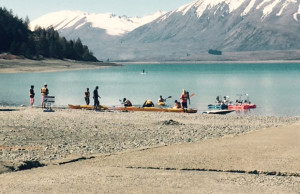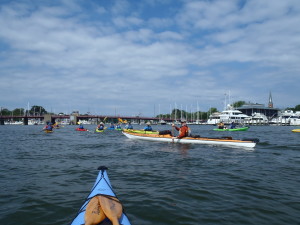Open water paddling, particularly in bodies of water where the temperature is cold, places risk management at the forefront. The margin for error can be slim indeed as shown by this Chilean kayak story involving the founder of North Face.
Experienced paddlers offer the following advice to ensure a safe trip on open water:

- Wear your PFD
- Take the right boat
- Follow the buddy system
- Take communication means
- Wear the correct clothing (layers with windbreaker or paddling jacket, or a wetsuit or drysuit)
- Make a float plan
- Know how to use the gear
- Have the right supplies/gear on hand (sufficient water and food)
- Know the area (tides, obstacles, weather, distances)
- Know your rescue skills
- Paddle in conditions that match your skills
- Use the correct boat for the contemplated body of water (recreational, white water, open water)
 Coincidentally, such precautions correspond to those of BSA’s Safety Afloat guidelines.
Coincidentally, such precautions correspond to those of BSA’s Safety Afloat guidelines.
This powerpoint presentation discusses leadership and risk management for paddlers, particularly open water kayakers.
And, by way of reminder, Safety Afloat requires that each participant receive either three hours training and supervised practice or demonstrate proficiency over 100 yards including recovery from a capsize before a unit using human-powered craft controlled by youth embarks on a float trip or excursion that covers an extended distance or lasts longer than four hours.
A final note from Broze and Gronseth, “Sea Kayaker Deep Trouble” (1997):

“Any crossing that is farther than you can swim – whether it’s between islands, points of a bay, or shores of a lake – puts you at increased risk of death if something goes wrong. And even an Olympic-caliber swimmer can’t swim a mile in 50 degree F water. If you choose to make such a crossing, you better know your limits, get the latest weather forecast, and be equipped and be prepared to deal with an emergency.”
“Your judgment is largely dependent on your experience. If your experience is limited to rescue practice done in a swimming pool or calm water, then you may underestimate the difficulty you’ll encounter when paddling in open water.”
Safe paddling! And, be aware out there!
